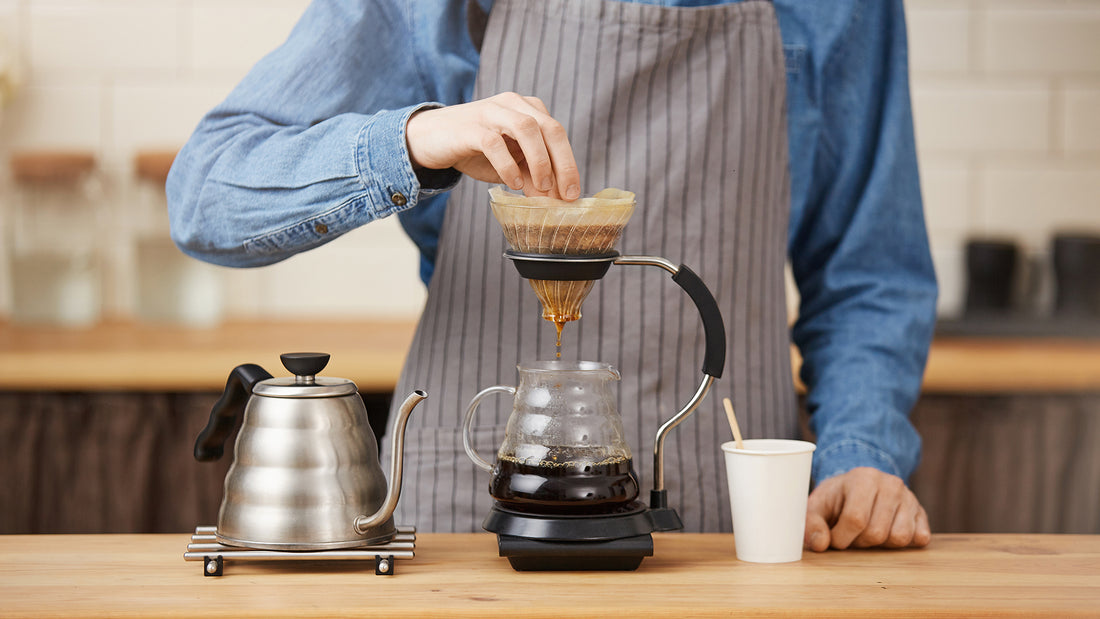Mastering Coffee Brewing Methods: Necessary Methods for every single Coffee Lover
The Scientific Research Behind Coffee Brewing: How Temperature Level and Time Affect Your Drink
Recognizing the scientific research behind coffee brewing exposes that temperature and time are not mere variables yet critical elements that dictate the drink's taste account and total quality. The ideal developing temperature level normally drops between 195 ° F and 205 ° F, while the period of extraction differs significantly across different methods. This interaction of factors can result in a cup that is either disappointing or delightful. As we explore the subtleties of these elements, the concern emerges: just how can one successfully balance temperature and time to achieve that ideal mixture?
The Chemistry of Coffee Extraction
The chemistry of coffee removal explores the complex processes that transform raw coffee beans right into the aromatic beverage appreciated worldwide. This improvement primarily includes the solubility of numerous substances existing in the beans, which are influenced by elements such as grind dimension, water top quality, and the brewing approach utilized.
During the developing process, warm water acts as a solvent, extracting soluble substances, consisting of high levels of caffeine, acids, sugars, and lipids, from the coffee premises. Each compound adds to the flavor account, fragrance, and body of the final drink. Acids are accountable for tasty and bright notes, while oils contribute to a rich mouthfeel.
The removal process is not uniform; different compounds dissolve at various rates. The preliminary stages of brewing remove acids and sugars, bring about a pleasurable acidity, while long term removal can bring about resentment because of over-extraction of unwanted substances. Comprehending these chemical communications is crucial for enhancing developing strategies, as the equilibrium in between removal time and water temperature level can significantly influence the general quality of the coffee. Eventually, mastering the chemistry of coffee extraction is vital to attaining a well-rounded and delicious cup.
Suitable Brewing Temperatures
Locating the appropriate developing temperature level is important for opening the complete possibility of coffee tastes and scents - coffee brewing methods. Study suggests that the optimal range for brewing coffee lies between 195 ° F to 205 ° F(90 ° C to 96 ° C) Within this variety, the extraction procedure properly liquifies the desirable soluble compounds in coffee beans, bring about a balanced and delicious cup
Brewing at lower temperature levels, such as below 195 ° F(90 ° C ), might lead to under-extraction, yielding an acidic and weak mixture with soft tastes. On the other hand, brewing at temperature levels going beyond 205 ° F(96 ° C) can lead to over-extraction, creating a bitter and extreme taste because of the excessive dissolution of undesirable substances, such as tannins.
Moreover, the optimal developing temperature can differ depending upon the coffee bean kind and roast degree. As an example, lighter roasts often gain from slightly higher temperature levels to boost their complicated flavor accounts, while darker roasts may be much better matched to reduced temperatures to mitigate resentment.
Inevitably, maintaining precision in developing temperatures is crucial for attaining an unified equilibrium of tastes, guaranteeing that every mug of coffee provides a gratifying sensory experience.
Effect of Brewing Time
Brewing time plays a pivotal duty in identifying the flavor profile and total top quality of coffee. The extraction procedure, which influences the taste, scent, and body of the drink, is largely reliant on how much time the coffee grounds are in contact with water. Shorter developing times can cause under-extraction, resulting in a sour or weak flavor, as inadequate soluble substances are liquified. On the other hand, long term brewing can cause over-extraction, where unwanted substances are released, resulting in an astringent or bitter taste.
Optimal developing time varies depending upon the approach used and the work dimension of the coffee. A French press More about the author usually needs regarding four minutes, while coffee extraction is typically finished within 25 to 30 secs. It is important to adjust brewing time in conjunction with various other variables, such as water temperature and coffee-to-water ratio, to accomplish the wanted flavor profile.
Recognizing the impact of brewing time allows coffee enthusiasts to improve their developing techniques, inevitably boosting the sensory experience of their mug (coffee brewing methods). With careful attention to this variable, one can unlock the complete potential of the coffee, disclosing its distinct qualities and nuances
Brewing Approaches and Their Results

As an example, approaches like French press and cool brew permit for a much longer steeping time, resulting in a fuller body and durable flavor because of boosted removal of oils and soluble solids. Alternatively, coffee developing uses high pressure and a shorter extraction time, producing a focused shot that highlights intense flavors and a rich crema.
Pour-over methods, such as Chemex or V60, supply a more controlled removal procedure, permitting the brewer to control circulation price and water distribution, which can improve brightness and clarity. Percolation methods cycle water through the coffee grounds several times, leading to a more powerful, typically bitter taste.
Lastly, using paper filters versus steel filters can additionally affect the final preference; paper filters typically generate a cleaner mug by trapping oils and great bits, while steel filters permit more oils to travel through, adding to a fuller mouthfeel - coffee brewing methods. Understanding these subtleties can boost the coffee experience dramatically
Tips for Developing Your Brew
A well-executed mixture can change also the most basic coffee right into an impressive experience. To accomplish this, attention to information is crucial. Beginning with high-grade, freshly roasted beans, as their taste profile diminishes in time. Grind the beans simply before making to make best use of quality, making certain the work dimension matches your brewing approach-- coarser for French press and finer for espresso.
Water quality plays a critical role; use filtered water without pollutants. The optimal brewing temperature level varies in between 195 ° F and 205 ° F(90 ° C to 96 ° C ) Too hot can scorch helpful site the coffee, while too great might under-extract flavors.
Timing is equally essential. For immersion techniques, steeping for 3 to 5 mins is optimum, whereas drip techniques usually take about 5 mins. Try out brew times to locate your preferred stamina.

Conclusion
In summary, the complex partnership in between temperature level and time is paramount in the coffee developing process. Following ideal brewing temperature levels in between 195 ° F and 205 ° F, along with specific timing customized to every technique, guarantees the preferred flavor profile is achieved. Recognizing these scientific principles empowers people to improve their developing methods, ultimately leading to a more well balanced and pleasurable coffee experience. Proficiency of these factors is necessary for any coffee lover seeking quality in their drink.
Comprehending the scientific research behind coffee developing exposes that temperature level and time are not mere variables yet essential elements that dictate the beverage's taste profile and general top quality. Understanding these chemical interactions check it out is essential for enhancing brewing strategies, as the equilibrium between extraction time and water temperature level can dramatically influence the total top quality of the coffee.Developing time plays a pivotal role in identifying the taste account and total high quality of coffee. By focusing on these elements-- bean high quality, grind dimension, water temperature level, steeping time, and ratio-- you can boost your coffee brewing process, resulting in a regularly premium mug.
In recap, the intricate partnership between temperature level and time is paramount in the coffee developing process.